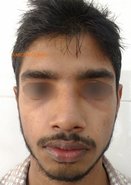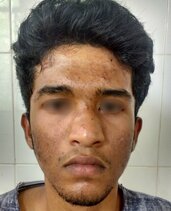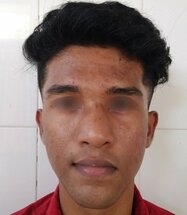NOSE JOB ( RHINOPLASTY )
It is also referred to as 'nose job', rhinoplasty is the surgery of the nose. A rhinoplasty addresses appearance and function of the nose. It is a technique for improvement of height, tip, width of nose and airway issues (obstruction). Nose occupies a central part of the face. Needless to say deviations in the appearance of the nose are easily observed by others. The shape of a good nose is such that it should not draw attention to itself. It is one part of our anatomy which shows enormous variation depending upon our ethnicity. A rhinoplasty is considered as among the more difficult of cosmetic surgery procedures since many parameters affect the final appearance of the nose. It is usually not a simple addition and subtraction procedure.
An initial consultation is important to assess the individual expectations and to know if the person is a good candidate for surgical correction. Treatment options are based on the physical characteristics, associated airway issues and needs (expectations) of the individual. During the consultation various treatment options, risks and complications are explained to the patient. Sometimes an appointment with an ENT doctor may be scheduled for assessment of airway problems. This may involve tests such as nasal endoscopy. Airway issues due to the septal abnormality can usually be treated at the same time as rhinoplasty. In some cases, surgery may be declined if the doctor feels that there may not be any significant improvement in the appearance of the patient.
Like other major cosmetic surgery procedures, a second appointment may be scheduled along with the spouse or immediate caregiver. Preoperative pictures are obtained. The outcomes and possible complications are also reviewed.
Surgery is performed under general or local anesthesia. Longer procedures are done under general anesthesia. The incision is placed on the inside of the nose and a small part of it is visible on the under-surface of the nose. The scars usually settle well. The procedure depends on the abnormality and the steps tailored to correct these. This may include
- alteration of the tip with removal, addition or alteration of the shape of the cartilages which form the nasal tip.
- increase or reduction of the dorsum of the nose. Additional cartilage may be harvested from within the nose, ear or near the ribs.
- reconstruction of internal and external valves of the nose.
- alteration of the septum of the nose.
- narrowing of a wide base of the nose with the removal of a small disc of tissue.
- correction of asymmetry of the nose by manipulation of bones and cartilages.
- alteration of certain lip muscles to better improve the relation of nose and upper lip.
The patient can usually return to work in 5 days. The splint is removed in a week. Improvement in the appearance is visible in spite of the swelling by the end of 2 weeks. Most of the swelling is usually goes by the end of the first month. The nose settles into the final appearance by the end of the first year.
You can read more about post operative instructions of rhinoplasty here.
For more information about revision rhinoplasty (secondary correction) visit here.
For more information on cleft lip nose correction, visit here.
Preoperative and postoperative pictures of congenital nasal cleft treated with local flap and dermabrasion.
Revision rhinoplasty done in an individual with nasal obstruction and tip and dorsal deformity.
Reconstruction of nose in complex central facial injury
























